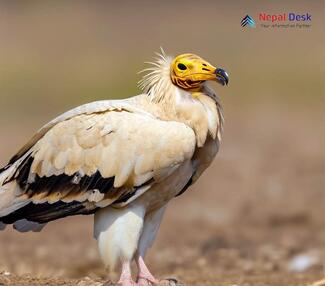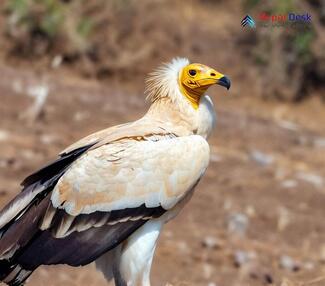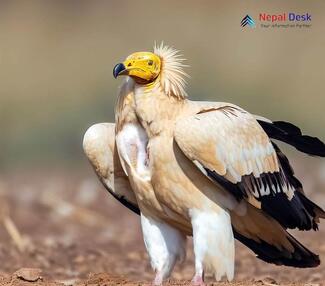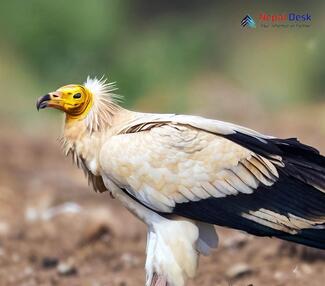As you venture through the stunning landscapes of Nepal, you might just spot one of its most unique residents soaring high above - the Egyptian Vulture (Neophron percnopterus). This remarkable bird of prey is a sight to behold both due to its striking appearance and its increasingly threatened status. Also called The White Scavenger Vulture or Pharaoh's Chicken, it is a small Old World vulture and the only member of the genus Neophron. The Egyptian vulture was formally described by the Swedish naturalist Carl Linnaeus in 1758. Lets look at the various aspects of this magnificent creature:
Admiring the Egyptian Vulture's Beauty
The Egyptian Vulture is an elegant bird of prey characterized by its predominantly white plumage and distinctive black flight feathers. Its bright yellow face with a contrasting black bill only adds to the bird's allure. Adults boast a featherless face, while younger birds feature dark brown plumage that gradually lightens as they mature.
A Vital Role in Nepal's Ecosystem
As scavengers, Egyptian Vultures play a vital role in maintaining the balance within Nepal's ecosystem. By feeding on carcasses, they help prevent the spread of diseases and contribute to sanitation efforts in their environment. This essential ecological service often goes unrecognized, but without these unique birds, we could be exposed to serious health risks.
A Threatened Population
Despite their importance and beauty, Egyptian Vulture populations are facing an alarming decline in Nepal and across their worldwide range. This decline can be attributed to various factors, including habitat loss due to human development, indirect poisoning from ingesting poisoned animal carcasses left by hunters, and electrocution from power lines.
Making a Difference for Vultures in Nepal
To stem this troubling trend and give these fascinating birds a fighting chance, numerous organizations are stepping up conservation efforts, such as monitoring populations and implementing protective measures. These measures include raising awareness about the importance of Egyptian Vultures within local communities and promoting responsible waste management practices that reduce the risk of poisoning.
A Symbol of Hope in Nepal
Despite their threatened status, the Egyptian Vulture remains a symbol of hope for Nepal's flourishing biodiversity and serves as a powerful reminder of the delicate balance between humans and nature. As you explore the captivating scenery of Nepal, don't forget to look up - you just might catch a glimpse of these striking birds as they spread their wings and grace the skies above.
Through combined efforts from both local communities and conservation organizations, we may be able to secure a future for this invaluable species and ensure that the Egyptian Vulture will continue to soar high across Nepal's skyline.




